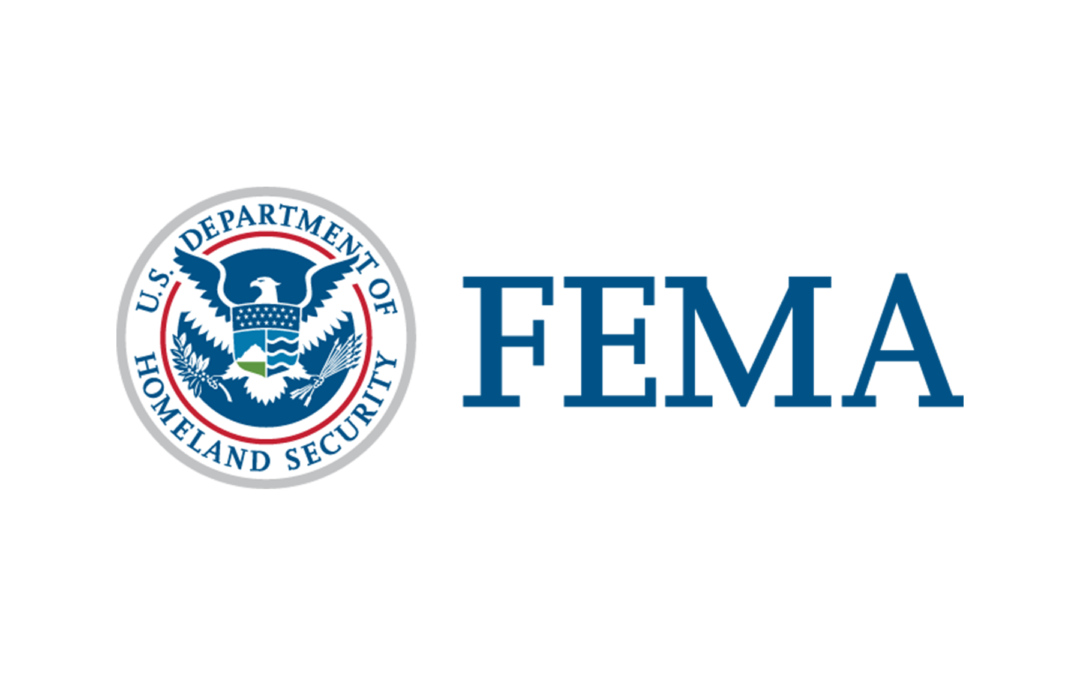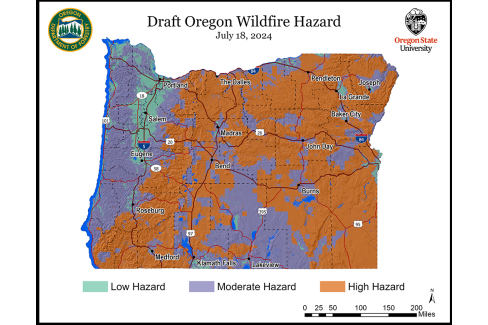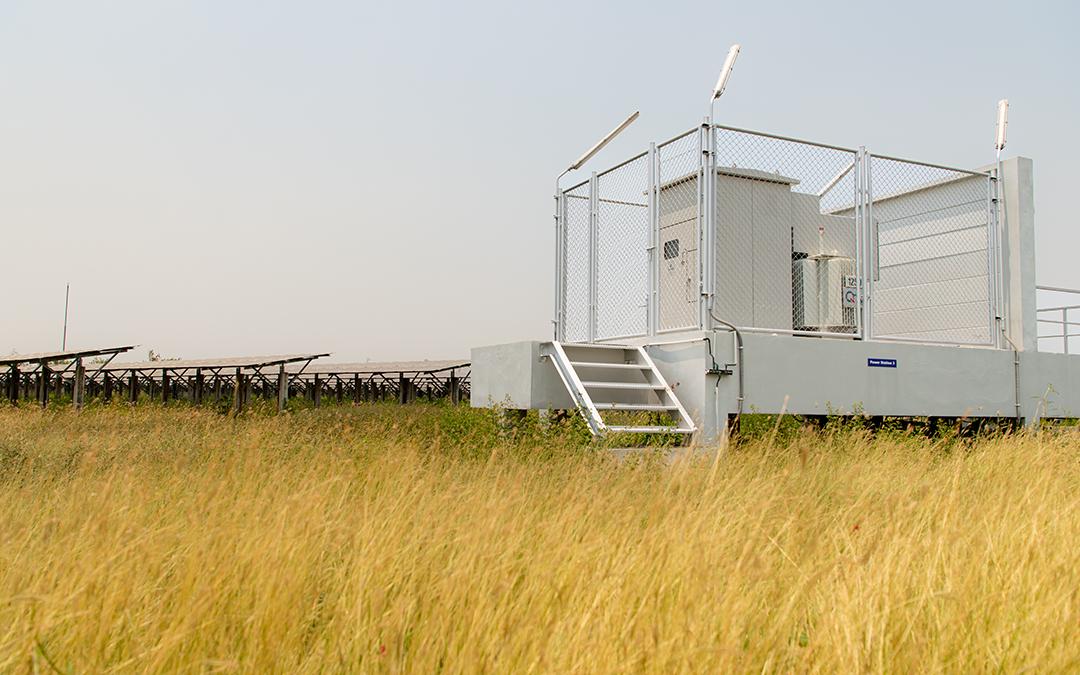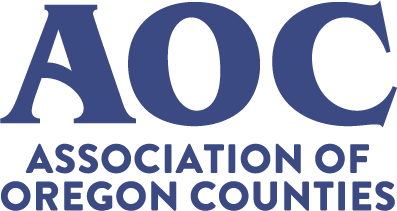
Mar 31, 2025 | AOC Advocacy, Natural Resources
Senate Bill 777, introduced this legislative session to change the methodology used to determine wolf attack loss grants, easily passed the Senate on Tuesday, March 25, and now heads to the House for consideration.
The bill removes the “missing” category from the types of depredations eligible for compensation and places a multiplier on depredation that occurs based on the type of animal impacted and the recommendation of the county advisory committee. It also increases the amount of grant program funds that must be put toward non-lethal deterrents from 30% to 50%.
Although similar bills have been introduced in prior sessions, the Association of Oregon Counties took the lead this session in working with the Oregon Cattleman’s Association and impacted Oregon counties and provided testimony on the program to articulate why, from an administrative standpoint, the bill was necessary. Although many ranchers in south-central and eastern Oregon participate in the program, there are some counties that see less than 10% of their entire ranching population participate. The changes from SB 777 are expected to encourage more participation in the program, ensuring that more deterrents are on the landscape and that ranchers will be justly compensated.
The Wolf Depredation Compensation and Financial Assistance Grant Program was established as a complementary and necessary program for the full implementation of Oregon’s Wolf Plan, when the Legislature unanimously passed House Bill 3560 in 2011. HB 3560 stipulated grant money would be made available to assist counties in compensating those who suffer loss, injury, or missing livestock due to the presence of wolves in their area. The bill also allocated financial assistance to counties that implement livestock management or nonlethal wolf control techniques. These methods could include, but are not limited to, range riders, spotlighting, pasture monitoring, fox lights, air cannons, non-lethal projectiles, carcass removal and drones with thermal optics, to name a few. HB 3560 also required counties to allocate a minimum of 30% of the funds they request to livestock management or nonlethal deterrents.
To participate in the program, counties were required to establish a county wolf depredation committee. The makeup of a county committee, per ORS 610.150, includes one sitting county commissioner, two livestock owners, two wolf conservationists, and two members of the business community (agreed upon by the other members). In 2012, only eight counties were eligible for funding; however today 18 of Oregon’s 36 counties have established wolf depredation committees.
With the Senate vote of SB 777, this is the first major change to the wolf depredation program in over 10 years.
Contributed by: Branden Pursinger | Legislative Affairs Manager

Dec 17, 2024 | AOC Advocacy, Natural Resources
The 82nd Legislative Assembly officially convened for a special session on wildfire funding on Dec. 12, called by Gov. Kotek on Nov. 26, to allocate roughly $218 million to the Oregon Department of Forestry (ODF) and the Oregon State Fire Marshal (OSFM) to cover all pending expenses and outstanding bills from the 2024 wildfire season. By 3 p.m., the sole funding bill, Senate Bill 5801, had passed out of the Joint Special Session Committee on Wildfire Funding and was headed to the Senate and House for final passage. SB 5801 passed the Senate 25-2 and the House 41-2. By noon on Friday, Dec.13, the bill was signed by Gov. Kotek and the funds were being directed to ODF and OSFM.
The Association of Oregon Counties (AOC) testified in support of SB 5801. Without the passage of SB 5801 and the necessary finances to cover these costs, Oregon would have run the risk of not having the workforce or the vendors to fight fires during future wildfire seasons. The $191.5 million allocated to ODF will be used to pay 2024 gross large fire costs and ensure the agency is able to distribute roughly $17 million in timber sales revenue to counties and local taxing districts in 2024. The $26.6 million allocated to OSFM addresses cash flow concerns and reconciles the state’s obligations from this past fire season.
“This special session was an opportunity to receive funding for the 2024 wildfire season, however it was much more,” said Oregon State Fire Marshal Mariana Ruiz-Temple. “It sparked the conversation from partners and our legislators that Oregon needs a modernized wildfire funding methodology ─ one that focuses on the prevention and mitigation on the front end and adequate suppression. I am hopeful that as we move into session this work will continue to gain momentum and finally find solutions that meet the wildfire crisis and the conditions on the ground where they are at. Thank you to all our partners for their support.”
Between 2010 and 2019, the 10-year average of acres burned increased from 100,000 acres to roughly 500,000 acres annually. In 2020, over 1 million acres were burned and in 2024 that number reached 2 million acres. Since 2010, the total area in Oregon that has burned is equivalent to the combined land mass of Massachusetts and New Jersey.
Oregon’s gross wildfire costs averaged around $11 million per year from 2002 to 2012. From 2014 to 2024 these costs surged to an average of $75.5 million annually. The 2020 and 2021 calendar years exceeded $120 million, and the wildfire response costs alone in October of 2024 were $250 million and were continuing to climb. The full financial impact of the 2024 wildfires on the state is $352 million ─ $212 million higher than the previous record set in the 2020 Labor Day fires. However, the complete financial impact, when costs to local governments are fully factored, is not yet known but is expected to total well over half a billion dollars.
AOC will continue to advocate in the 2025 session for a long-term funding mechanism to support state and local government wildfire mitigation and response efforts.
Contributed by: Branden Pursinger | Legislative Affairs Manager

Aug 25, 2024 | AOC News, Natural Resources
After years of action by Congressman Peter DeFazio (D-OR) to delay the implementation of the new National Marine Fisheries Services (NMFS) Biological Opinion (BiOp), which would make significant changes to the implementation of the Federal Emergency Management Agency’s (FEMA) National Flood Insurance Program (NFIP), a letter was sent to impacted jurisdictions in mid-July.
That letter stated local jurisdictions within the NFIP would be required to have in place “Pre-Implementation Compliance Measures (PICM)” no later than Dec. 1, 2024. The purpose of these PICMs according to FEMA were to “ensure the continued existence of threatened or endangered species in compliance with the Endangered Species Act.”
NFIP participating communities in Oregon must select one of the PICM pathways laid out by FEMA:
- Adopt a model ordinance that considers impacts to species and their habitat and requires mitigation to a no net loss standard.
- Choose to require a habitat assessment and mitigation plan for development on a permit-by-permit basis.
- Put in place a prohibition on floodplain development in the Special Flood Hazard Area.
These PICMs must be in place until the release of the Final Implementation Plan and implementation in 2027. If an impacted jurisdiction does not pick a PICM pathway by the Dec. 1 deadline and notify FEMA of their selection, they will default to a permit-by-permit basis (Option 2).
FEMA defines “development” in their model ordinances as “any man-made change to improved or unimproved real estate, including but not limited to buildings or other structures, mining, dredging, filling, grading, paving, excavation or drilling operations or storage of equipment or materials.”
FEMA’s draft guidance states the following actions are not required to have a habitat assessment or a new floodplain permit issued, as these activities, according to FEMA, do not meet the NFIP definition of “development.” However, any other applicable federal, state, or local requirements still must be met. If the activity is not one of the exemptions listed below, a new floodplain permit and/or habitat assessment will be required before a project can begin.
- Routine maintenance of existing landscaping that does not involve grading, excavation, or filling.
- Removal of noxious weeds, hazard trees, and replacement of non-native vegetation with native vegetation.
- Normal maintenance of above and below ground utilities and facilities (e.g. replacing power lines and utility poles.
- Normal road maintenance, but not including the expansion of the road system. (e.g. filling potholes, repaving, installing signs and traffic signals).
- Normal maintenance of a levee or flood control facility. Normal maintenance does not include repair from flood damage, expansion, or addition of material.
- Plowing and other normal farm practices on legally existing agricultural areas. Any new structure / filling, or the addition of land by way of clearing will likely require both a development permit and a habitat assessment.
FEMA’s draft guidance also states the following actions are required to have a permit but not a habitat assessment.
- Normal maintenance, repairs or remodeling of structures provided such work does not constitute a substantial improvement or repair of substantial damage. To comply, the cost of such work must be less than 50% of market value of the structure.
- Activities with the sole purpose of creating, restoring, or enhancing natural functions associated with floodplains, streams, lakes, estuaries, marine areas, habitat and riparian areas – provided these activities do not include structures, grading, fill, or impervious surfaces.
- Development of open space and recreational facilities (parks, trails, etc.) provided they do not include structures, fill, or the removal of more than 5% native vegetation.
- Repair to onsite septic systems, provided the ground disturbance is the minimal necessary and best management practices are followed to prevent stormwater and soil erosion.
- Projects that have already received concurrence under another ESA following permit (e.g. US Army Corps of Engineers 404 permit).
- Repair of an existing, functional bulkhead in the same location and footprint with the same materials when the Ordinary High-Water Mark is still outside of the face of the bulkhead.
As outlined in the guidance document for review of development on a permit by permit basis with accompanying habitat assessment, site visits as well as documentation of fill/removal activities must be documented and reported by the local planning authority.
AOC staff, as well as county planning directors, commissioners, and impacted parties from across the state have been meeting with agency heads and the governor’s office regarding these new requirements and the new processes local jurisdictions will have to follow.
The model ordinance that has been released can be found here.
The Floodplain Habitat Assessment and Mitigation regional guidance for Oregon can be found here.
Contributed by: Branden Pursinger | Legislative Affairs Manager

Jul 24, 2024 | Natural Resources
The Oregon Department of Forestry (ODF) released the most recent wildfire hazard map draft on July 18, inviting public review and comment until Aug. 18. Senate Bill 80 (2023) allows counties one additional opportunity to review the map, engage in further discussions, and consider making additional edits if desired. View official draft maps at Wildfire Risk Explorer.
SB 80 Section 1(13)(b) states: county commissioners, upon request by the county commissioners, must have one additional opportunity, arranged and scheduled by the Association of Oregon Counties, with either in-person attendance or a hybrid of in-person and remote attendance, to discuss concerns about the map and potential changes to the map.
County commissioners should notify AOC Staff if they would like to attend this additional opportunity. The meeting will occur in August at the Association of Oregon Counties (AOC) office in Salem. This meeting for counties is separate and distinct from the public comment period. Commissioners are welcome to attend in person or virtually for this discussion. ODF and Oregon State University (OSU) will present the draft map and gather this last round of feedback.
When AOC worked on the wildfire map section of SB 80 with ODF, counties were able to place in statute a series of meetings between counties and the state to ensure local characteristics, which were not factored into the SB 762 version, were considered.
SB 80 states in Section 1 (12): “… to ensure that local characteristics in each area of this state are considered in the mapping process and before the draft map is released, the department shall meet with County Commissioners and the county commissioners’ staff in eight in-person meetings throughout this state.”
Per SB 80 (2023) Section 1(12), in the fall of 2023, AOC hosted eight in-person and one virtual wildfire hazard map meetings in partnership with ODF throughout the state.
ODF and OSU used the gathered information from those meetings to begin implementing the feedback based on the four statutorily permissible criteria: vegetation, topography, weather, and climate. After making changes, ODF and OSU worked with county planning departments around the state to factor in additional local characteristics to the map.
The final version and official publication of the wildfire hazard map is projected to occur in October.
Contributed by: Branden Pursinger | Legislative Affairs Manager

Map courtesy of the Oregon State University College of Forestry and the Oregon Department of Forestry.

Mar 27, 2024 | AOC Advocacy, AOC News, Natural Resources
In November 2017, the Oregon Board of Forestry (BOF) directed staff to evaluate whether the pursuit of a Habitat Conservation Plan (HCP) in conjunction with the issuance of incidental take permits made sense from a ‘business perspective.’ Specifically, BOF staff sought to determine whether the HCP could meet their twin goals of ensuring financial security for those that obtain revenues through harvest and providing adequate habitat for the 15 species targeted for mitigation by the department. The BOF voted to continue the HCP development process upon receiving the Business Case Analysis in 2018. As a first step, the Oregon Department of Forestry (ODF) prepared a Comparative Analysis between three different management plans: the current forest management plan, a draft revised forest management plan, and the proposed HCP. Upon reviewing the report, the BOF convened and directed staff to continue the process and requested a National Environmental Policy Act (NEPA) analysis from the federal services. The NEPA analysis was released in March of 2022.
During every stage of the HCP development, the Forest Trust Land Advisory Committee (FTLAC) received information regarding the proposed modeled average annual harvest volumes generated from the lands deeded to the state in trust for long term management and Greatest Permanent Value. Over the past seven years, trust land county commissioners became more and more concerned with the continued reduction in proposed harvest (see habitat conservation area maps). Timber harvest not only generates general operating revenues for county governments, special districts, and schools, but the industry provides family wage jobs in their communities.
Trust land counties have a 10-year average of 249 million board feet (MMBF). The harvest projections under the proposed HCP decreased from 250 MMBF to 225 MMBF. The projections dropped again to 165-180 MMBF in the Implementation Plans and most recently the December 2023 modeling projections are 161-182.5 MMBF.
Pursuant to ORS 526.156, FTLAC is allocated time on every BOF Agenda to testify on the management of their deeded trust lands. While the FTLAC chair and vice chair have always testified, in March and before the final HCP vote was to occur, all five FTLAC commissioners testified. Many counties also submitted written letters in opposition of the current plan as drafted.
Coos County Commissioner and FTLAC Chair John Sweet, discussed the disappointment counties had in not being included in putting the plan together and how the plan could have been supported by all parties impacted if changes were made. Clatsop County Commissioner Courtney Bangs discussed the fiscal impacts counties will feel as well as the impacts not harvesting will have in management practices and wildfire potential. Columbia County Commissioner Margaret Magruder discussed the financial impact the proposed HCP would have on schools, the state’s overall budget, and the operating revenues at the Department of Forestry. Linn County Commissioner Will Tucker discussed the economics locally of the plan as drafted; and Tillamook County Commissioner and FTLAC Vice Chair Erin Skaar highlighted the challenges counties will face seeking funding from the Legislature and how the BOF and ODF should view counties as partners.
The Board of Forestry ended up voting to move the HCP forward on a vote 4-3.
Contributed by: Legislative Affairs Manager Branden Pursinger

Dec 21, 2023 | AOC Advocacy, Natural Resources
Oregon set a goal of generating 50% of the total electricity needed for Oregonians through renewable resources by 2040. As a result of this goal, found in the Oregon Renewable Portfolio Standard, wind and solar projects have been increasing across the landscape. In 2020, solar energy generation accounted for approximately 1,077,900 MWh or just shy of 3% of all the electricity generated in Oregon. Wind power makes up 11.6% of the electricity generated in the state (~8,777,254 MWh). With the evolving energy systems, such as bioenergy, geothermal, and hydropower, the demand for energy storage has grown significantly.
Legislative Committee staff invited AOC to participate in a legislative work group, whose intent was to craft language for a bill concept to introduce in the upcoming February session. It was clarified in the work group up front that county commissioners would need to see the final language before taking an official position. However, AOC staff agreed to join the group and provide input where appropriate. In addition to AOC staff, Lake County Commissioner James Williams also participated in the legislative work group.
The work group has met every few weeks since mid-September with the purpose of developing bill language to resolve an issue brought forward by some energy storage clients. Specifically, “energy storage facilities are not formally being reviewed or permitted by EFSC.” Using House Bill 2989-2 (2023) as a starting place, the work group began discussing various aspects of battery energy storage systems. A battery energy storage system is a device that would enable the energy from a renewable project like solar or wind, to be stored and then released later when the power is most needed. The work group discussed where these battery systems could or should be located, as well as how the siting and permitting process works both on a county and state level. After many discussions, the bill concept was narrowed to a few widely agreed-upon areas.
First, a definition of battery energy storage systems was necessary to place in statute. Because the Energy Facility Siting Council (EFSC) statutes were written before this technology was created, a definition is necessary for the EFSC to operate under. Next, a shared desire among some in the work group was the ability for counties to request a review of projects through the EFSC, similar to other energy projects, if that was how the county desired to handle the projects. Finally, there was a belief that a separate site certificate is not required if the battery energy storage system was being requested and would be subject to a site certificate for another energy facility (see language found in ORS 469.320).
The bill concept is currently being drafted in the Office of the Legislative Counsel for the 2024 session. Once draft language is available, the bill concept will be brought to the Natural Resources Steering Committee in January for discussion and consideration.
Contributed by: Branden Pursinger | AOC legislative affairs manager






